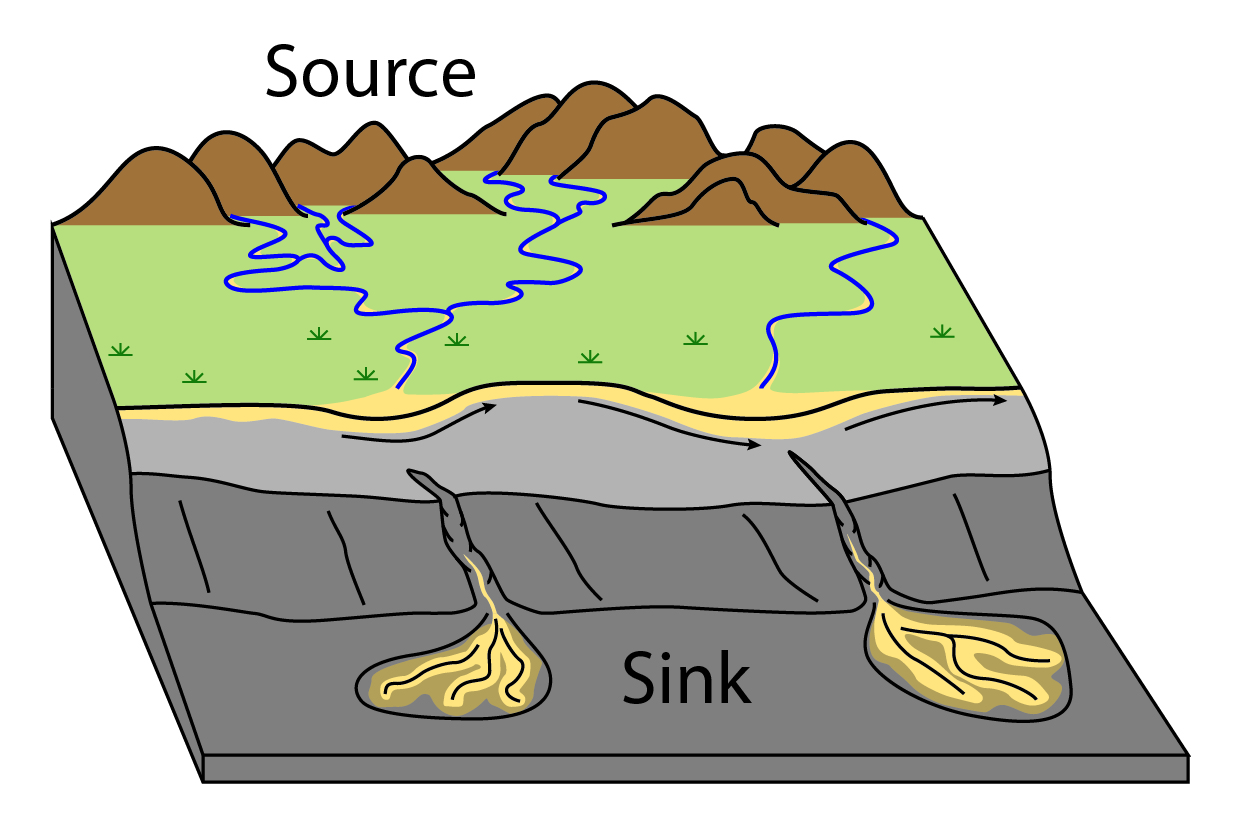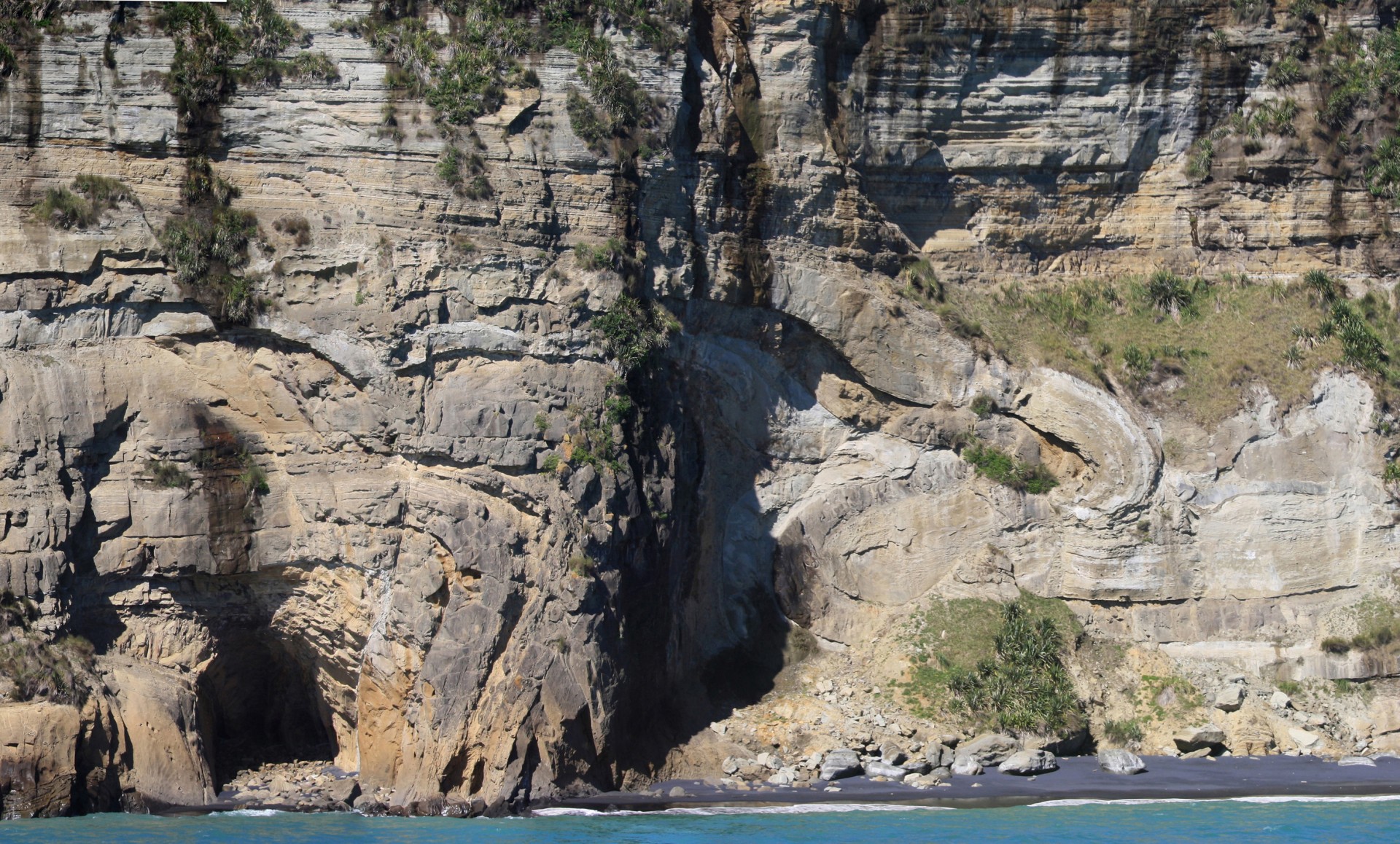Research
Dr. Sharman is currently looking for motiviated M.S. and Ph.D. students to conduct research on a variety of topics.
Sediment Routing from Source-to-Sink
I study how landscapes, sediment dispersal systems, and sedimentary basins evolve in response to internal and extrinsic controls (e.g., tectonics, climate). To do this effectively, one must consider the entire sediment routing system, from up-dip erosional landscapes to down-dip sedimentary accumulations. In particular, I conduct integrated sedimentary provenance analysis, including radiogenic dating of detrital minerals, to reconstruct ancient sediment routing systems, providing insight into how the earth’s surface responds to geologic processes over long timescales (i.e., millions of years or longer). Ongoing project include:
- Cretaceous-Paleogene sediment routing from the Laramide Rocky Mountains to the U.S. Gulf of Mexico
- The stratigraphic response to abrupt global warming at the Paleocene-Eocene boundary
- Sediment routing dynamics in foreland and forearc basins

Schematic depiction of a sediment routing system – modified from Sharman et al. (2017): EPSL.
Petroleum Geology
My interests in petroleum geology stem from my background as an exploration geologist with ConocoPhillips and experience in industry-sponsored research at Stanford University and the University of Texas at Austin. Ongoing research relevant to the field of petroleum geology includes application of 3D outcrop modeling to reservoir characterization, deep-water sedimentology, and application of source-to-sink concepts to petroleum geology workflows.

Time slice through a 3D seismic volume from the Molasse Basin, Austria (after Sharman et al., 2017: Basin Research).
Detrital Geochronology: Application and Approaches
Isotopic dating of detrital minerals, or detrital geochronology, has become a leading method of investigating the provenance (origin) of sand- and silt-sized sediment and for constraining the depositional age of stratigraphic sequences. My research focuses on applying detrital geochronology to reconstruct ancient sediment routing systems and to constrain sediment mixing and transport within modern depositional systems. Some ongoing project include:
- Detrital zircon geochronology of the western and central U.S., with a focus on Cretaceous-Paleogene sediment routing patterns
- Developing python-based approaches for efficient visualization and analyzing of detrital data
- Statistical approaches for uncertainty estimation in detrital age distributions

Example detrital zircon age distributions plotted using python. Data from Sharman et al. (2013): Geology.
Deep-Water Clastic Sedimentary Systems
While deep-marine depositional processes span a diverse range, my research has focused on studying the depositional products and processes associated with submarine mass-movement. In particular, my research is focused on understanding the kinematic history and controls (e.g., tectonics, sea-level) on development of sand-rich submarine landslides. I am also interested in understanding the influence of lithology and depositional setting on mass-transport deposit characteristics and the paleogeographic significance of mass-wasting in deep-marine and shelfal settings. Future research will expand on previous work by including study of a wide range of marine depositional systems, in both outcrop, subsurface (e.g., seismic-reflection data), and in modern seafloor datasets.

My favorite recumbent fold within the North Awakino Mass-Transport Deposit, Taranaki Basin, New Zealand. See Sharman et al. (2015): Geosphere for more information.
3D Outcrop Modeling and Characterization
Three-dimensional (3D) outcrop models provide a powerful way of visualizing and analyzing geologic data. Recent improvements in the flight and photographic capabilities of unmanned aerial vehicles and the development of user-friendly photogrammetry software have allowed 3D outcrop models to be generated efficiently. Such outcrop models have potential to contribute to reservoir modeling, facies analysis, and virtual exploration of outcrops. My research interests include exploring ways to extract quantitative data from 3D outcrop models.

Oblique image from a 3D outcrop model of Paint Mines Interpretive Park, Denver Basin, Colorado.